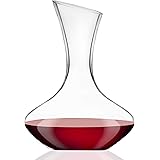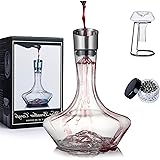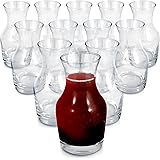Uncorking the Truth: Exploring the Health Benefits of Red Wine
For centuries, the potential health benefits of red wine have been a topic of fascination, often contributing to its allure. In the accompanying video, Dr. Jen tackles a prevalent question: is red wine truly good for your heart, and if so, what are the nuances involved? This discussion frequently centers around what is known as the “French paradox,” a phenomenon where certain populations, despite consuming diets rich in saturated fats, exhibit surprisingly low rates of heart disease. It is often believed that their regular, moderate intake of red wine plays a significant role in this observation.
The Enduring Appeal of Red Wine: From Paradox to Science
The “French paradox” serves as a compelling starting point for understanding why red wine’s health implications are so widely discussed. Countries like France and Italy, known for their culinary traditions and regular wine consumption, often report higher longevity and lower incidences of specific chronic diseases. However, attributing these outcomes solely to red wine can be an oversimplation. It is important that a holistic view of diet, lifestyle, and other cultural factors is considered.
Many of the perceived advantages of red wine are thought to stem from its rich antioxidant content. These powerful compounds are substances that can prevent or slow damage to cells caused by free radicals, unstable molecules that the body produces as a reaction to environmental and other pressures. A balanced intake of antioxidants is considered crucial for maintaining cellular health and supporting various bodily functions, thus contributing to overall wellness.
The Power of Antioxidants: Resveratrol and Beyond
Within the spectrum of red wine’s beneficial components, resveratrol stands out as the most widely studied. This polyphenol, primarily found in the skin of grapes, is often linked to the potential red wine health benefits. Resveratrol is believed to act as a powerful antioxidant, capable of protecting the lining of blood vessels in the heart. This protection is thought to help reduce the risk of blood clot formation and decrease levels of “bad” LDL cholesterol.
However, resveratrol is not the only antioxidant found in red wine. Other polyphenols like proanthocyanidins and anthocyanins also contribute to its antioxidant capacity. These compounds are responsible for red wine’s distinctive color and astringency, and they are also understood to possess beneficial properties for cardiovascular health. While the focus is often on individual components, it is plausible that a synergistic effect, where these compounds work together, provides the greatest benefit.
Studies have suggested that these antioxidants might contribute to several health markers. For instance, they are believed to support vascular health by promoting vasodilation, which is the widening of blood vessels. This effect can lead to improved blood flow and potentially lower blood pressure. Furthermore, some research indicates that these compounds could have anti-inflammatory properties, which are crucial for preventing chronic diseases, including various forms of heart disease.
Defining “Moderation”: A Critical Distinction
Despite the potential red wine health benefits, the critical factor, as emphasized in the video, is moderation. It is often misunderstood what constitutes a “moderate” amount of alcohol, particularly with red wine. Consuming alcohol within recommended guidelines is paramount because the positive effects can easily be undone, and risks significantly increased, with excessive intake. It is generally understood that the “sweet spot” for potential benefits is quite narrow.
For women, moderation is defined as up to seven servings per week. For men, this limit is typically set at up to 14 servings per week. Exceeding these guidelines, particularly for women, occurs more easily than many realize. These numbers are not arbitrary; they are based on extensive research into alcohol’s effects on the human body and are designed to minimize potential harm while allowing for potential benefits.
Understanding Serving Sizes
A key challenge in adhering to moderate alcohol consumption is accurately gauging serving sizes. In the context of red wine, one standard serving is generally considered to be five ounces. This amount, when visually measured, is often perceived as quite small, especially when compared to a typical “generous pour” in a restaurant or at home. It is therefore frequently underestimated how much wine is being consumed.
To put this into perspective, if a wine glass is filled half to two-thirds full, it is highly probable that two or more servings are being poured at once. This practice quickly accumulates over the course of an evening or a week. Therefore, to truly benefit from the antioxidants in red wine, it is recommended that individuals become accustomed to what a five-ounce pour looks like using a measuring cup. This simple exercise can reveal just how easily one might unintentionally consume more than is considered moderate.
The Risks of Exceeding the “Sweet Spot”
While discussions often focus on the red wine health benefits, it is equally important to acknowledge the substantial risks associated with heavy or excessive alcohol consumption. Once the threshold of moderation is crossed, the protective effects of wine are negated, and various health risks begin to escalate. These risks are not trivial and can have significant, long-term consequences for health and well-being.
Heavy drinking is known to contribute to increased blood pressure, heart muscle damage (cardiomyopathy), and irregular heart rhythms. Furthermore, it significantly raises the risk of liver disease, certain cancers (including breast, colon, and esophageal cancers), and weakens the immune system. Beyond physical health, excessive alcohol intake also poses risks to mental health, often exacerbating conditions like anxiety and depression. Therefore, it is strongly advised that consumption levels are carefully monitored to avoid these serious health implications.
Beyond the Glass: A Holistic View of Wellness
It is crucial to remember that red wine, even in moderation, is just one component of a broader healthy lifestyle. The “French paradox,” for instance, is not solely attributable to wine but also to a diet rich in fruits, vegetables, whole grains, and healthy fats, alongside an active lifestyle and strong social connections. These factors collectively contribute to better health outcomes and longevity. Therefore, relying on red wine as a sole health booster would be misguided.
Ultimately, while the notion of red wine health benefits remains an intriguing topic supported by some scientific evidence, it is the disciplined adherence to moderation that defines whether those benefits are realized or whether health risks emerge. The insights provided by Dr. Jen in the video emphasize that awareness of serving sizes and weekly limits is essential for anyone who wishes to incorporate red wine into a health-conscious lifestyle.







